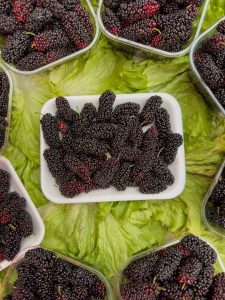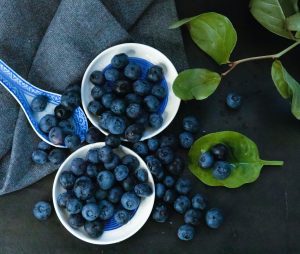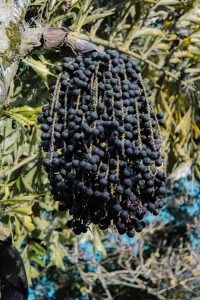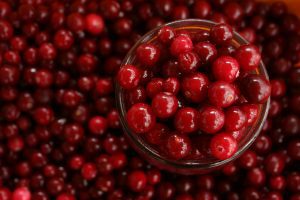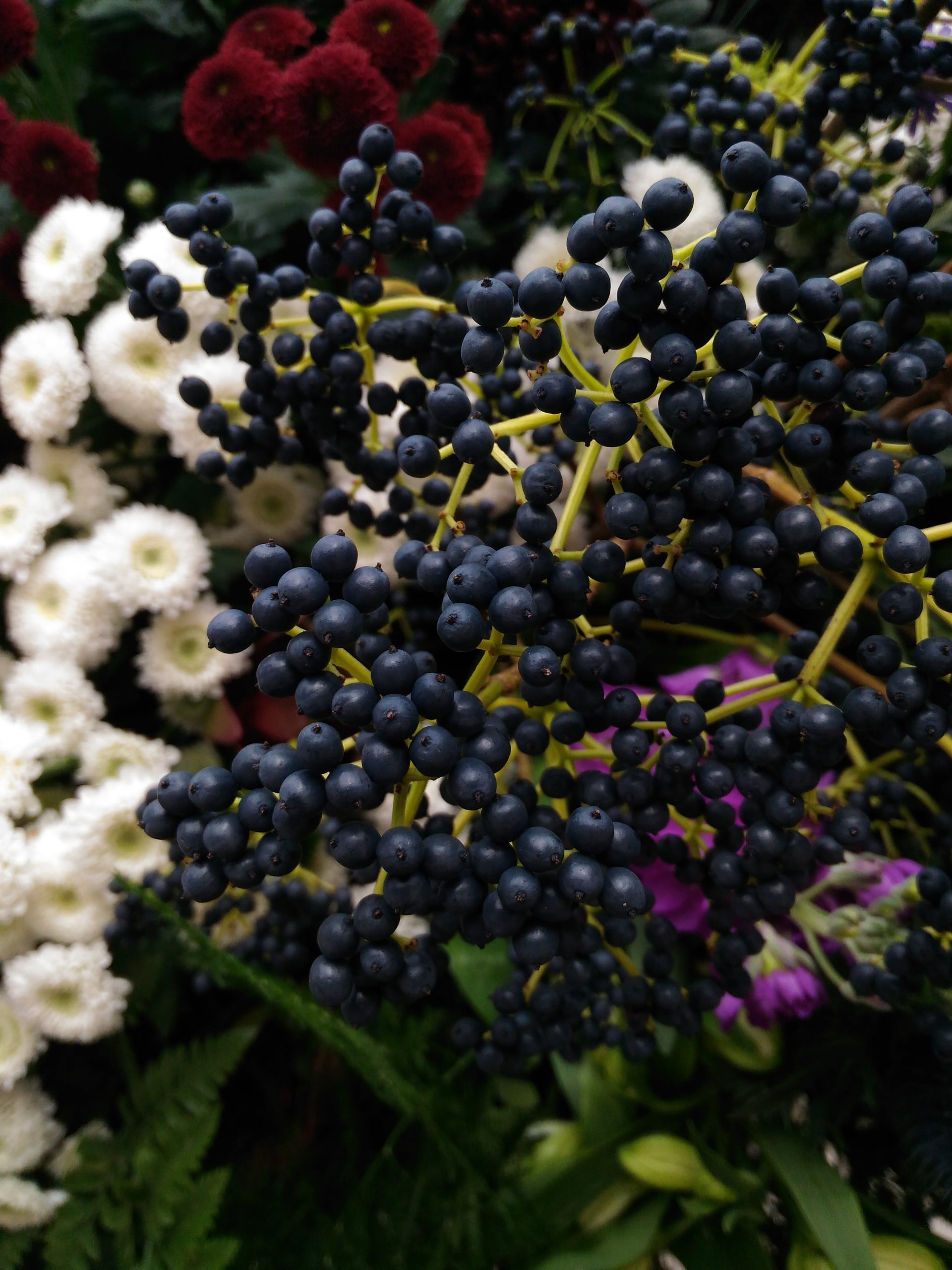
What are Elderberries?
Elderberries, the dark purple to black berries of the elder tree (Sambucus nigra), grow in clusters and are utilized for culinary and medicinal purposes. Indigenous to Europe and found globally, these berries are tart and commonly processed into jams, jellies, and syrups due to compounds that can induce nausea when consumed raw. Rich in antioxidants and vitamins, elderberries are believed to have health benefits, with elderberry syrup being a traditional remedy for cold and flu symptoms. However, caution is advised, as improper preparation can render the berries toxic.
Elder trees, deciduous and often found in hedgerows, produce fragrant white flowers in late spring, transforming into the berries in summer. While elderberries have historical culinary and medicinal significance, consumers should exercise care in their consumption. Before using elderberries for medicinal purposes, consulting healthcare professionals is advisable, especially considering potential risks and the need for proper processing to neutralize toxic compounds.
When Do We Eat Elderberries?
Elderberries are typically consumed after being cooked or processed due to the presence of compounds in their raw state that can cause gastrointestinal upset. The berries are commonly used in culinary applications and traditional remedies after being transformed into various products. Here are common instances when elderberries are eaten:
- Jams and Jellies:
- Elderberries are often used to make jams and jellies, where the berries are cooked with sugar to create spreads with a sweet and tart flavor.
- Syrups:
- Elderberry syrup is a popular preparation, especially during the cold and flu season. It is made by cooking elderberries with water and sweeteners, and it’s believed by some to have potential health benefits.
- Desserts:
- Cooked elderberries can be incorporated into desserts like pies, crisps, and puddings to add their unique flavor.
- Beverages:
- Elderberry juice or tea is another way to consume elderberries. The berries can be steeped or processed to make a flavorful beverage.
- Medicinal Products:
- Elderberry supplements, extracts, and medicinal syrups are also available commercially. These products are typically processed to ensure safety and efficacy.
It’s important to note that consuming raw or unripe elderberries is not recommended due to the presence of compounds that can be toxic. Proper cooking or processing neutralizes these compounds and makes elderberries safe for consumption. Additionally, caution should be exercised when foraging for elderberries in the wild, as misidentification of the plant or ingestion of unprocessed berries can pose risks. Always follow recommended guidelines and, if using elderberry products for medicinal purposes, consult with a healthcare professional, especially if you have underlying health conditions or are taking medications.
Health Benefits
Elderberries are often touted for their potential health benefits, attributed to their rich nutritional profile and the presence of various bioactive compounds. It’s important to note that while elderberries have been used traditionally for medicinal purposes, scientific evidence supporting some of these claims is still evolving. Here are some potential health benefits associated with elderberries:
- Rich in Antioxidants:
- Elderberries contain high levels of antioxidants, including flavonoids, which may help neutralize harmful free radicals in the body and contribute to overall health.
- Immune System Support:
- Some studies suggest that elderberries may have immune-boosting properties. Elderberry extracts are often used in traditional remedies to help alleviate symptoms of colds and flu.
- Anti-Inflammatory Effects:
- The antioxidants in elderberries may contribute to anti-inflammatory effects, potentially aiding in the management of inflammatory conditions in the body.
- Heart Health:
- Certain compounds found in elderberries may contribute to heart health by promoting healthy cholesterol levels and supporting blood vessel function.
- Rich in Vitamins and Minerals:
- Elderberries are a good source of vitamins, including vitamin C, which is important for immune function, and various minerals like potassium and iron.
- Cold and Flu Relief:
- Elderberry syrup, in particular, is a popular folk remedy for alleviating symptoms of the common cold and flu. Some studies suggest that it may reduce the duration and severity of these illnesses.
- Antiviral Properties:
- Compounds in elderberries have been investigated for their potential antiviral properties. Some research suggests that they may inhibit the replication of certain viruses.
It’s important to exercise caution and consult with a healthcare professional before using elderberry products for medicinal purposes, especially if you have underlying health conditions, are pregnant, or are taking medications. While elderberries offer potential health benefits, their use should be part of a well-rounded and balanced approach to health, including a healthy diet and lifestyle.
Nutritional Value
Elderberries are rich in various nutrients and bioactive compounds, making them a nutritious addition to a balanced diet. Here is an overview of the nutritional value of elderberries per 100 grams:
- Calories: Elderberries are relatively low in calories, providing about 73 calories per 100 grams.
- Macronutrients:
- Carbohydrates: Elderberries are a good source of carbohydrates, with around 18.4 grams per 100 grams.
- Dietary Fiber: Elderberries are rich in dietary fiber, providing approximately 7 grams per 100 grams. Dietary fiber is important for digestive health and can help regulate blood sugar levels.
- Vitamins:
- Vitamin C: Elderberries are high in vitamin C, containing about 36 mg per 100 grams. Vitamin C is an antioxidant that supports the immune system and skin health.
- Vitamin A: Elderberries contain small amounts of vitamin A, which is essential for vision and immune function.
- Minerals:
- Potassium: Elderberries provide a moderate amount of potassium, an essential mineral that plays a role in maintaining proper heart and muscle function.
- Phosphorus: Elderberries contain phosphorus, contributing to bone health and various physiological processes.
- Iron: Elderberries contain small amounts of iron, important for oxygen transport in the blood.
- Antioxidants:
- Flavonoids: Elderberries are rich in flavonoids, including quercetin and anthocyanins. These compounds have antioxidant properties and may have various health benefits.
It’s important to note that the nutritional content of elderberries can vary based on factors such as ripeness, growing conditions, and processing methods. While elderberries offer several nutritional benefits, it’s essential to consume them in moderation as part of a varied and balanced diet. Additionally, as mentioned earlier, proper processing or cooking is recommended to neutralize certain compounds and ensure their safety for consumption.
Types of Elderberries
The term “elderberries” is generally used to refer to the fruit of the elder tree (Sambucus nigra). While there is one primary species associated with elderberries, there can be some variations in the specific cultivars or varieties. Additionally, different regions might have local variations of elderberries. Here are a few common types of elderberries:
- Sambucus nigra:
- This is the most common species of elderberry and is native to Europe, though it is also found in other parts of the world. The dark purple to black berries of Sambucus nigra are the ones most commonly used for culinary and medicinal purposes.
- Sambucus canadensis:
- Also known as American elderberry, this species is native to North America. The berries of Sambucus canadensis are similar to those of Sambucus nigra, and both are used for various purposes.
It’s worth noting that within these species, there may be different cultivars or varieties developed for specific characteristics, such as improved fruit production or disease resistance. Some examples of elderberry cultivars include ‘Adams,’ ‘Johns,’ and ‘York.’
When considering elderberries for culinary or medicinal use, it’s important to ensure that the berries are from a reliable and safe source, as some varieties may have toxic components if not properly processed or cooked. Additionally, wild foraging should be done with caution to avoid misidentification and potential health risks. If you are interested in cultivating elderberries, choosing recognized and safe cultivars is recommended.
The most common elderberries used in various products, such as jams, syrups, and supplements, are typically derived from Sambucus nigra or Sambucus canadensis.
Signs of Ripe, Signs of Raw and Signs of Rotten Elderberries
Identifying the ripeness of elderberries is essential for safe consumption and optimal flavor. Here are some signs to help you distinguish between ripe, raw, and potentially rotten elderberries:
Signs of Ripe Elderberries:
- Color:
- Ripe elderberries are generally dark purple to black in color. The exact shade can vary, but they should have a deep, rich hue.
- Clustering:
- Elderberries grow in clusters, and ripe berries on a given cluster tend to ripen simultaneously. Look for clusters where most berries have reached a dark color.
- Softness:
- Ripe elderberries are softer to the touch than unripe ones. They should yield slightly when gently pressed.
- Ease of Removal:
- When elderberries are ready to be harvested, they should easily come off the stem with a gentle touch. If they resist, they may not be fully ripe.
Signs of Raw (Unripe) Elderberries:
- Color:
- Unripe elderberries are typically green or red. As they ripen, they gradually darken to purple and then black.
- Firmness:
- Unripe elderberries are firmer than ripe ones. If they feel hard when pressed, they are likely not ready for harvest.
- Bitter Taste:
- Unripe elderberries can have a bitter taste. It’s essential to taste a small berry to ensure it is not bitter before using them in culinary or medicinal preparations.
Signs of Rotten Elderberries:
- Mold or Discoloration:
- Rotten elderberries may have mold or a fuzzy appearance. Discard any berries with visible signs of mold or discoloration.
- Unpleasant Odor:
- Rotten elderberries may emit an unpleasant or sour odor. If the berries have an off-putting smell, it’s a sign that they may be spoiled.
- Sliminess:
- Elderberries that are overripe or rotten can become slimy. If the berries feel excessively slippery or slimy, it’s an indication that they may be past their prime.
When harvesting elderberries, it’s crucial to ensure that you are correctly identifying the plant to avoid toxic varieties. Additionally, always wash elderberries thoroughly before use, and discard any berries that appear questionable or exhibit signs of spoilage.
Summary
Elderberries, the dark purple to black fruit of the elder tree (Sambucus nigra), are prized for their culinary and potential medicinal benefits. Rich in antioxidants, vitamins, and flavonoids, elderberries are commonly used in jams, syrups, and desserts. Known for their immune-boosting properties, elderberries have been traditionally used to alleviate cold and flu symptoms. It’s crucial to note that consuming raw elderberries is discouraged due to potential toxicity, and proper cooking or processing is essential. Elderberry products, such as syrups and supplements, are commercially available, but caution is advised. Harvesting elderberries requires identifying ripe berries by their dark color, softness, and ease of removal, while avoiding unripe or potentially rotten berries with signs like mold, discoloration, or an unpleasant odor.

